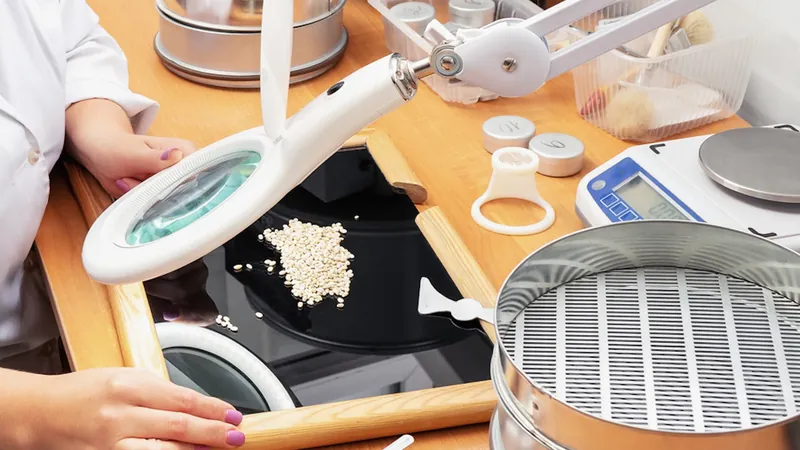
Revolutionary Light Technology to Protect Global Food Supply—A Game Changer for Farmers!
2024-12-22
Author: Emma
Introduction
In a groundbreaking discovery, scientists from the University of Illinois have unveiled an innovative method using light to safeguard our food supply from dangerous fungi, particularly threatening corn and wheat—two of the world's most essential crops that feed billions each year, according to Phys.org.
About the Technology
Published in the prestigious journal Food Research International, this cutting-edge technology employs a unique form of ultraviolet light known as far-UVC. Unlike traditional UV lights that pose health risks to humans, this 222-nanometer light is perfectly safe for human exposure while being lethal to the fungi that can ruin our food sources.
Research Findings
The research team conducted rigorous tests, targeting two notorious grain-destroying fungi. The results were nothing short of remarkable: the light effectively eradicated 99.999% of fungal spores in laboratory conditions and cut down fungal presence on actual corn and wheat by over 90%.
Methodology
"We developed a specialized treatment system with six lamps that envelop the grains, ensuring thorough exposure," explained lead researcher Yi-Cheng Wang. This method deviates from conventional practices, where light was typically positioned only above items, as food products exist in three dimensions.
Industry Impact
Food contamination due to fungi is an enormous concern, costing the industry hundreds of millions of dollars annually and potentially leading to illnesses through the production of dangerous toxins known as mycotoxins. Yet, current solutions often rely on ineffective or harmful chemical treatments.
Benefits of the Technology
One of the standout features of this new technology is its simplicity and cost-effectiveness. The tests not only showed no detrimental effects on the grains, but treated corn also exhibited improved germination rates compared to untreated samples.
Conclusion
Farmers and food processors could greatly benefit from this chemical-free approach, ultimately leading to reduced food waste, decreased reliance on toxic fungicides, and a more resilient food supply chain. As the research progresses, the team is gearing up to expand this technology for use in grain processing facilities. If successfully implemented, this could revolutionize the food industry, paving the way for a cleaner, healthier food system that benefits both consumers and the environment.
Future Prospects
Indeed, this advancement could mark a turning point in agricultural practices, ensuring a safer and more sustainable future for our global food supply—so stay tuned for developments that could reshape how we farm!









 Brasil (PT)
Brasil (PT)
 Canada (EN)
Canada (EN)
 Chile (ES)
Chile (ES)
 España (ES)
España (ES)
 France (FR)
France (FR)
 Hong Kong (EN)
Hong Kong (EN)
 Italia (IT)
Italia (IT)
 日本 (JA)
日本 (JA)
 Magyarország (HU)
Magyarország (HU)
 Norge (NO)
Norge (NO)
 Polska (PL)
Polska (PL)
 Schweiz (DE)
Schweiz (DE)
 Singapore (EN)
Singapore (EN)
 Sverige (SV)
Sverige (SV)
 Suomi (FI)
Suomi (FI)
 Türkiye (TR)
Türkiye (TR)